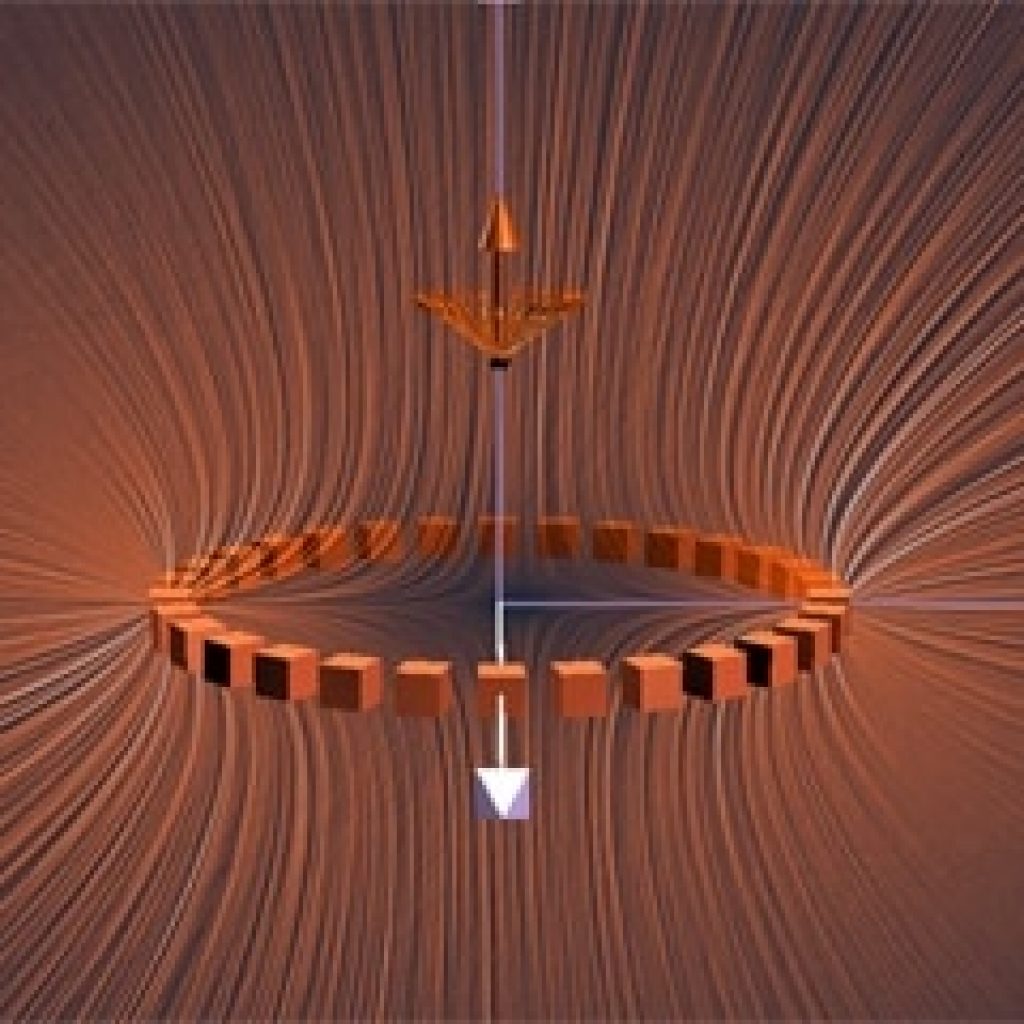There is a form of “robustness” inherent in AC power generated by rotating electro-magnetic fields (spinning generators). Those magnetic fields are a form of very short-term power storage that can fluctuate in reaction to changing loads. This is one form of reactive power or VAR (Volts-Amps-Reactive). VAR provides a level of stability to the power and adds a component of muscle to the power which enhances its transportability across distances.
VAR also assists in providing the extra boost that is required to energize field windings in motors and the primary windings in a transformer. It is this act of “energizing” that creates the electromagnetic fields that induce motion in motors and currents in the secondary windings of a transformer.
In addition, it is relatively easy to build a little “headroom” into a system powered by a spinning generator. This headroom is often referred to as a “spinning reserve.” Spinning reserves are the other component of muscle that is required to properly start and sustain inductive loads as those loads fluctuate.
I don’t remember seeing this formula in any of my college engineering textbooks but I like to look at it like this:
Power + spinning reserves + VAR = robust power.
Which brings us to the problem with PV solar in commercial environments.
synthesized power.
Solar panels generate DC power. DC power must be converted to AC before it can be used by traditional loads or pushed back onto the grid. This conversion takes place in the solar inverters found in every AC PV solar system. These inverters electronically break DC into timed positive or negative pulses which combine to simulate an AC sine wave.
While they don’t generate a perfect sine wave, solar inverters are quite effective at generating usable power in the form of kilowatt-hours (kWh). In residential applications, this works very well, because most utilities only bill for kWh in residential. Solar is effective at offsetting kWh.
In commercial, industrial and manufacturing (CIM) environments, on the other hand, the utilities generally charge for at least two additional components – kVA or demand and VAR which is sometimes billed as power factor penalties or extra demand charges. On the grid, demand or kVA spikes are covered through the spinning reserves (headroom) and VAR is at least partially covered through the robustness of the electro-magnetic fields. As we’ve already seen, however, both of these components of power tend to be missing in PV solar synthesized power.
Headroom is largely a function of cost. Solar is still relatively expensive and most systems are engineered to meet minimum requirements. Typical thinking assumes that these systems will be grid-tied and the grid can provide the momentary headroom needed to cover demand spikes less expensively than solar.
The VAR problem is slightly more complicated. The prevailing school of thought is that inverters can provide VAR by shifting the phase angle between the amps and the volts. Indeed, this satisfies one of the textbook definitions of VAR, but it still completely lacks the electro-magnetic field support required to do real work.
This creates at least two problems.
- Excess kWh generated by solar systems is pushed back to the grid through net meters before it is transformed up to grid levels for use by other customers. Net meters gives full credit for the excess kWh but a lot of that energy is lost when it hits a service transformer lacking the electro-magnetic VAR to properly energize the transformer windings. This means that the utility sees less usable power than they’ve been forced to pay for. Admittedly, this is mostly a problem for the utilities, but our experience is that utilities will always find a way to recuperate their losses. Not to mention that the utilities hate to pay retail for power that can be bought elsewhere at wholesale prices.
- Since solar systems have no inherent electro-magnetic support and usually no headroom, the needs for VAR and headroom must be supplied by the grid. These components of power are typically billed at a much higher rate than kWh. Further, power factor is usually calculated as a ratio between metered kWh and metered kVARh. Where solar is producing kWh behind the meter and VAR is being supplied through the meter, this ratio can be greatly distorted – often resulting in much higher power factor penalties. This usually means that a significant portion of the savings on kWh in CIM businesses is offset by increased demand and/or power factor charges. We have, in fact, seen extreme cases where the power bills actually increased after the deployment of PV solar systems – even where kWh consumption was almost fully offset by the solar generation.
Solutions?
So, what is the solution? First of all, it is important to reset our expectations for solar in CIM environments. While solar is very good at offsetting kWh consumption, it cannot, on its own, supply the electro-magnetic backing required to start motors and correct the power factor issues. Depending on how your utility calculates the charges for low power factor, this can dramatically reduce realized savings.
In the meantime, electro-magnetic VAR support can help make PV solar power much more robust. This form of VAR support will dramatically improve the efficiency of motor starts and the transport of excess kWh back to the grid. If sized properly, it will also solve the power factor problem. It doesn’t do a lot to solve the headroom problem but can nonetheless have a dramatic effect on the savings realized from your PV solar system.
One caution: Capacitor banks have traditionally been used to inject VAR into electrical systems. Many solar system engineers have tried adding capacitance to solar power with disappointing or even harmful results. Capacitor banks without electro-magnetic VAR support, will not improve the situation and can, in fact, increase problems with harmonics and cause damage to your systems.
We know of one company that has done pioneering work on electro-magnetically backed VAR generation systems. We have seen their systems deployed on a number of PV solar systems with outstanding results.






